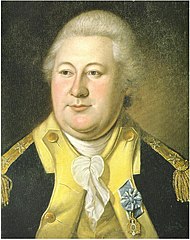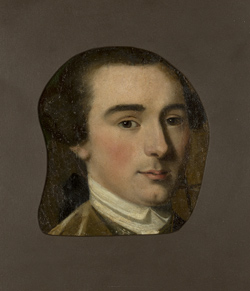”Marched 8 Miles towards Boston on the late Alarm”
Church hadn’t been among the Whig leaders who went out to Cambridge in an attempt to calm the militia men who responded to the “Powder Alarm” before the situation became violent.
Instead, he passed on information from central Massachusetts:
Mr. Stearns just arrived from Paxton informs me that the Inhabitants of Springfield, Leicester, Paxton, Spencer and the Towns adjacent had risen in one body armed & equipped and had proceeded on their March as far as Shrewsbury on their way to Boston to the Number of Twenty Thousand, and were with difficulty perswaded to return, and would not till from many Passengers from this way they were convinced that there was no necessity for their Assistance at this time.Church’s informant was likely Dr. Samuel Stearns (1741–1809), a physician and almanac-maker who lived in Paxton in this period. During the war he was accused of being a Tory and jailed for passing counterfeit bills, and then he fled to British-occupied New York.
The number of 20,000 militia men is clearly an exaggeration. A few days later, a head count of the turnout to close the Worcester County court session totaled 4,722 men, including 180 from Leicester, 80 from Paxton, and 164 from Spencer—and that was deemed a large number.
Other Boston Whigs told similar stories of rural companies feeling disappointed that they didn’t reach the scene of action in Cambridge on 2 September.
For some people, that emotion lasted a while longer. On 6 November, John Adams was coming back from the First Continental Congress when he stopped in Palmer, Massachusetts (not yet incorporated and therefore still referred to as “Kingsfield” or “Kingston” after an early settler, John King).
New England laws forbade travel from one town to another on the Sabbath except in emergencies. Adams and his colleagues therefore had to spend that whole day in Palmer. In his diary he wrote:
We walked to Meeting above 2 Miles at Noon. We walked 1/4 of a Mile and staid at one Quintouns an old Irishman, and a friendly cordial Reception we had. The old Man was so rejoiced to see us he could hardly speak—more glad to see Us he said than he should to see [Thomas] Gage and all his Train.—Adams’s host appears to have been Duncan Quinton, born in Ireland in 1694 and dying in 1776. He and his wife Eunice had sons John (1743–) and Thomas (1746—), who married a month apart in 1771 (Thomas because his son Robert arrived seven months later). One of those young Quintons probably told Adams about the gun.
I saw a Gun. The young Man said that Gun marched 8 Miles towards Boston on the late Alarm. Almost the whole Parish marched off, and the People seemed really disappointed, when the News was contradicted.
Given the spirit evident in the fall of 1774, it’s disappointing that there are few if any first-hand accounts from men who marched in the Powder Alarm. One factor is that those same men probably marched at the news from Lexington, and perhaps when Gen. John Burgoyne approached from the north. Therefore, the memory of a march that didn’t go anywhere or end in any fighting could easily be overshadowed.

















